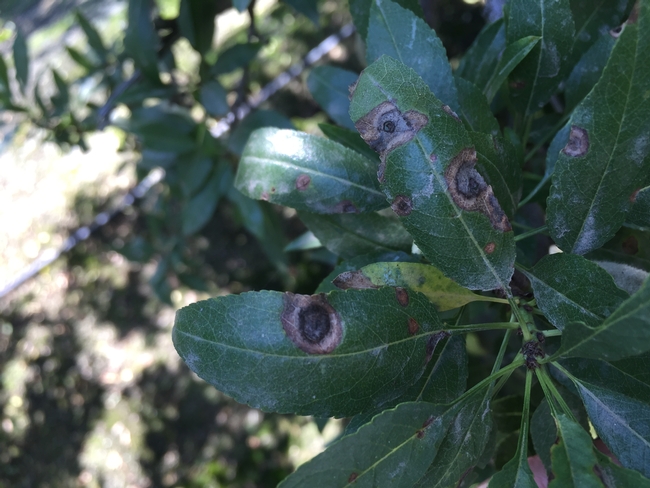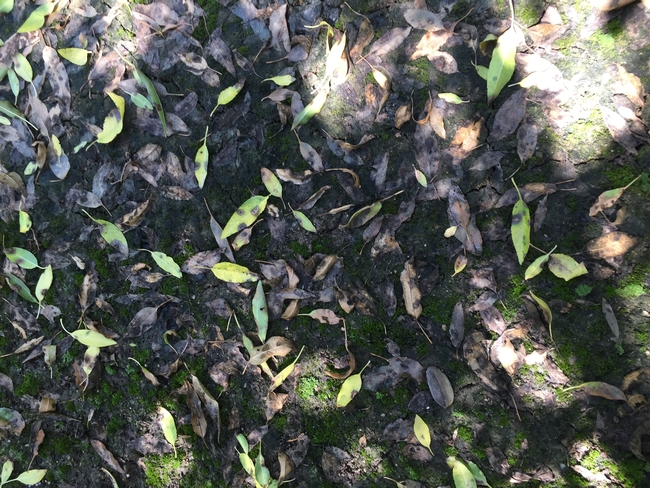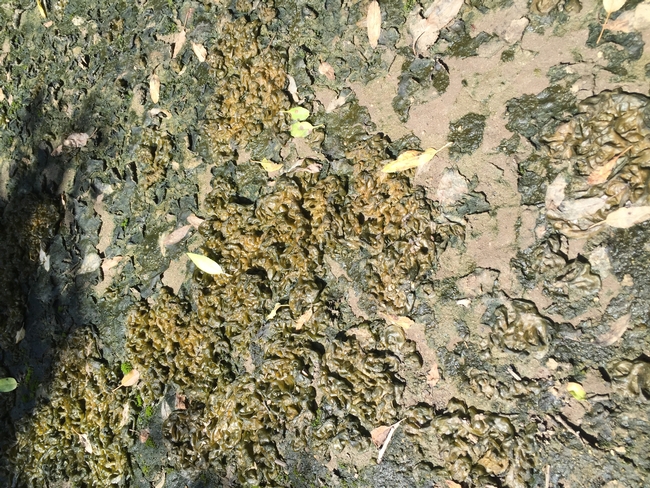Alternaria leaf spot was a focal topic of late June farm calls in humid portions of Tulare County orchards. The disease can be diagnosed based on symptoms, however, other components of the orchard ecosystem may aid in diagnosis. The large brown leaf spots (0.5-0.75 inches) turn black (Figure 1) as the fungus sporulates on the leaf surface. The leaf spots develop rapidly in June and July, leading to leaf drop (Figure 2) and potentially complete defoliation by early summer.
As the UC IPM Online website denotes, the disease is “most severe where dews form, humidity is high, and air is stagnant.” To assess whether environmental conditions in a block are conducive to disease, look for indications of humidity such as excessive moss or slime mold (Figure 3) on the orchard floor. Also consider whether symptoms are more prevalent on some varieties than others. For example, in a Fritz, Monterey, Nonpareil block, the disease will be most severe on the Monterey, which is the most susceptible variety in the block.
Blocks should be monitored for Alternaria from April through June. Where the disease is present, chemical treatments may begin in late spring. Visit UC IPM Online for more information. Additionally, the 2015 Fungicide Efficacy and Treatment Timing table for almond can be found at the following URL: http://ipm.ucanr.edu/PMG/r3902111.html#TREATMENT.
Figure 1. Leaf spots caused by Alternaria on almond. Photo: Elizabeth Fichtner.
Figure 2. Infected leaves abscise and are easily observed on the orchard floor. Photo: Elizabeth Fichtner
Figure 3. Excessive slime mold growth on the orchard floor is indicative of moist conditions. Photo: Elizabeth Fichtner


